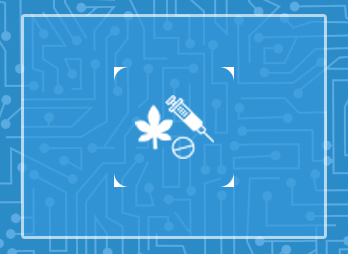
Anxiety is an emotion characterized by feelings of tension, worried thoughts and physical changes like increased blood pressure. People with anxiety disorders usually have recurring intrusive thoughts or concerns. They may avoid certain situations out of worry. They may also have physical symptoms such as sweating, trembling, dizziness or a rapid heartbeat.
The most common compulsions are excessive handwashing or taking bath, checking and counting.
Treating a person with anxiety depends on the causes of the anxiety and individual preferences. Often, treatments will consist of a combination of psychotherapy, behavioural therapy, yoga therapy and medication.
There are several exercises and actions that are recommended to cope with this type of anxiety:


Learning Disability (LD) Learning Disability is an individual’s academic under achievement in reading, writing and mathematics despite the presence of average to above average intelligence, appropriate instruction, regular school attendance and favorable environment. Approximately 10% - 12% children are estimated to have specific learning…
read more
Attention Deficit Hyperactivity Disorder (ADHD) ADHD is one of the most common childhood disorders and can continue through adolescence and adulthood. It is currently recognized as a disorder with behavioural, emotional, educational and cognitive aspects that impact on the life of a child with ADHD…
read more
Childhood Anxiety Anxiety disorders are among the most common mental health disorders in youth, affecting more than 10 percent of children and adolescents at some point in their development. Children with learning and attention issues may be even more likely than their peers to worry…
read more
School Refusal Children with school refusal may complain of physical symptoms shortly before it is time to leave for school. If the child is allowed to stay home, the symptoms quickly disappear, only to reappear the next morning. In some cases a child may refuse…
read more
Anger is a completely normal, usually healthy, human emotion. But when it gets out of control and turns destructive, it can lead to problems—problems at work, in your personal relationships, and in the overall quality of your life. Like other emotions, it is accompanied by…
read more
Psychoactive drugs act on the nervous system to alter our state of consciousness, modify our perceptions and change our mood. Human beings are attracted to psychoactive substances because they help them adapt to an ever-changing environment. Smoking, drinking and taking drugs reduce tension and frustration,…
read more
Personality disorders are deeply ingrained maladaptive patterns of behaviour manifested by the time of adolescence or earlier, which continue throughout adult life. The personality is abnormal either in the balance of its components, their quality and expression or in its total aspect. Because of this,…
read more
A psychosomatic disorder is an illness that connects the mind and body. This occurs in such a way that the physiological functioning of the body is affected by the psychological tensions that either causes a disease or worsen the pre-existing disease in a person. It…
read more
Depression is a common mental disorder involving persistent sadness and loss of interest or pleasure accompanied by several of the following symptoms: a loss of energy, a change in appetite, sleeping more or less, anxiety, reduced concentration, indecisiveness, restlessness, feelings of worthlessness, guilt, or hopelessness,…
read more
Anxiety is an emotion characterized by feelings of tension, worried thoughts and physical changes like increased blood pressure. People with anxiety disorders usually have recurring intrusive thoughts or concerns. They may avoid certain situations out of worry. They may also have physical symptoms such as sweating,…
read more
Sexual dysfunctions prevent or reduce an individual’s enjoyment of normal sex and prevent or reduce the normal physiological changes brought on normally by sexual arousal. These dysfunctions can be classified by the phase of the sexual cycle in which they occur. It is important to…
read more
A family is considered to be a group of individuals related by blood who are committed to one another’s well being. Our family can be our greatest source of support, comfort and love. But it can be our greatest source of pain and grief. A…
read more
Depression Depression is a state of low mood and aversion to activity. It may be a normal reaction to occurring life events or circumstances, a symptom of a medical condition, a side effect of drugs or medical treatments, or a symptom of certain psychiatric syndromes. Depression…
read more
Oppositional Defiant Disorder (ODD) Oppositional defiant disorder (ODD) is a behavior disorder in which the child is hostile, uncooperative and defiant toward peers, parents and other. Children who have ODD are often disobedient, easily angered and may seem to be angry much of the time.…
read more
Conduct Disorder Conduct disorder is a group of behavioral and emotional problems that usually begins during childhood or adolescence. Children and adolescents with conduct disorder usually have behaviors characterized by aggression to persons or animals, destruction of property, deceitfulness or theft and multiple violations of…
read more
Jayesh K.G is an experienced and eminent Psychologist based in Thrissur and Kochi. He is currently working as Consultant Psychologist & Child Specialist at POSITIVE Psycho therapeutic Clinic, Thrissur. He worked as a Consultant Psychologist, Dept. of Child and Adolescent Guidance Clinic, Healing Minds-A clinic for mind wellness, Kochi. He is also leading the Department of Child and Adolescent Guidance Clinic at CHILD Development & Psychotherapy Clinic, Kodungallur and Olive Health Care, Vatanapalli. Jayesh undertakes programs to increase awareness regarding mental health issues among the general population with the help of visual and print media.
 view more
view more
